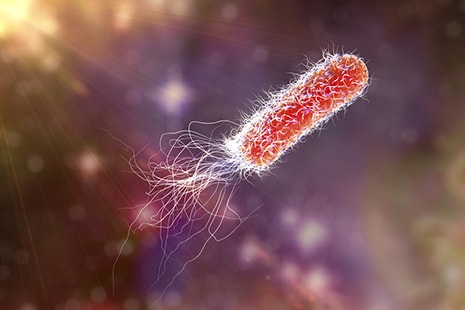Air pollution discovered to be a route for antibiotic-resistant gene transmission.
Orange County, CA - November 22nd 2016 - As levels of air pollution rise, worldwide concern for its public health effects steadily grows. Currently more than 80% of those living in urban areas are exposed to air quality levels below WHO standards. As the air quality declines, risk of stroke, heart disease, lung cancer, and respiratory diseases increases, but a new study further exposes previously unknown risks.
Researchers from the University of Gothenburg in Sweden took aim at identifying environments with the potential to transmit antibiotic resistant genes (ARGs). The team examined DNA samples taken from around the world looking for genes linked to antibiotic-resistant bacteria. With over 850 samples of DNA collected from humans, animals, and environments, evidence points to air pollution as a transmission route for the bacteria.
Considerable amounts of 325 known ARGs types were found, along with 131 known biocide/metal resistance gene types, and 17 known mobile genetic elements. These bacteria are untreatable with common antibiotics. Some proved to have genes resistant to carbapenems, the go to drug when combating severe bacterial infections.

Currently bacteria are able to evolve faster than doctors can adjust medication. As we treat the illness, the virus modifies itself to become resistant, chances of this increase when antibiotics aren’t taken correctly.
The study's results show antibiotic-polluted environments have the highest abundances of ARGs, with pharmaceutically polluted environments and air from Beijing smog having the most diverse ARGs. Urban air has similarly high abundance of ARGs as well as diversity. Evidence from these environments suggests such conditions may be a breeding ground for resistance and transmission.
"This may be a more important means of transmission than previously thought," said Joakim Larsson, professor at Sahlgrenska Academy and director of the Centre for Antibiotic Resistance Research at the University of Gothenburg.
The results were not conclusive on whether the bacteria in the air were alive, but scientists based on other studies of air believe there is a combination of living and dead bacteria in its makeup. The living bacteria are a greater threat, for their existence shows the adaptation of resistance.
The next step in their research is to find out if resistance itself spreads through the air. The research team plans to study air from European sewage treatment plants, as well as bacterial flora and the gut flora of people near and far from the plant to see if there is a connection.
Read their study here.
Contact Ampronix:

Email: info@ampronix.com
International Sales: +1 949-273-8000
Domestic Sales: 1800-400-7972 for US and Canada
Follow Us:
Share This Article:
View our Product Catalog Online Here
About Ampronix
Ampronix is a renowned authorized master distributor of the medical industry's top brands as well as a world-class manufacturer of innovative technology. Since 1982, Ampronix has been dedicated to meeting the growing needs of the medical community with its extensive product knowledge, outstanding service, and state-of-the-art repair facility. Ampronix prides itself on its ability to offer tailored, one-stop solutions at a faster and more cost-effective rate than other manufacturers. Ampronix is an ISO & ANSI/ESD certified facility. To learn more go here.
Air pollution discovered to be a route for antibiotic-resistant gene transmission. Orange County, CA – November 22nd 2016 – As levels of air pollution rise, worldwide concern for its public health effects steadily grows. Currently more than 80% of those living in urban areas are exposed to air quality levels below WHO standards. As the air quality […]



